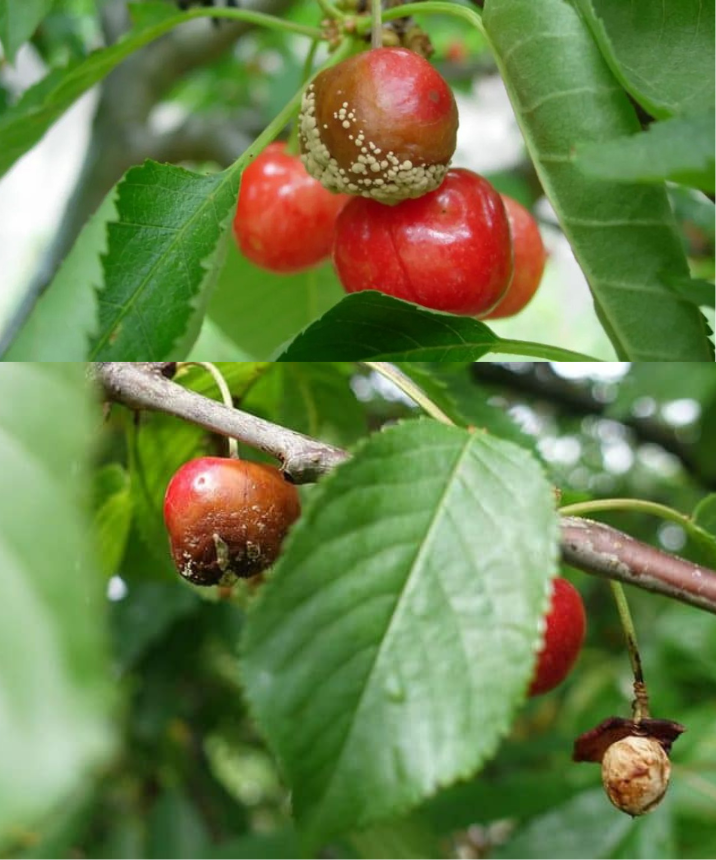Dark spots on cherries can be a troublesome issue for gardeners and fruit enthusiasts alike. These spots, also known as skin blemishes, can affect the appearance and quality of cherries and are often caused by fungal diseases or cultivation problems. Below, we’ll explain the possible causes of these spots and how to effectively treat them:
Causes of Dark Spots:
- Moniliasis or Brown Rot: This is a common fungal disease that affects stone fruits, such as cherries. Moniliasis can cause dark spots on the skin of cherries, which then spread and rot the fruit.
- Insect Damage: Some insects, like the cherry fruit fly, can sting cherries and cause skin damage that may appear as dark spots.
- Physical Damage: Cherries can develop dark spots due to physical damage, such as bruising or bumping during handling or transportation.
Remedies for Dark Spots:
- Cultural Practices:
- Maintain good drainage around cherry trees to prevent soil waterlogging, which can increase the risk of fungal diseases.
- Conduct proper pruning to promote air circulation and reduce moisture in the tree canopy.
- Disease Control:
- Apply suitable fungicides according to the manufacturer’s instructions to control fungal diseases like brown rot.
- Remove and destroy infected cherries to prevent disease spread.
- Insect Protection:
- Use traps or nets to protect cherries from insects like the cherry fruit fly, which can cause skin fruit damage.
- Post-Harvest Handling:
- Handle cherries with care to avoid physical damage that may result in the appearance of dark spots.
- Store cherries in a cool, dry place after harvest to reduce the risk of disease development.
Prevention:
- Practice good orchard management, maintaining the health of cherry trees and reducing the presence of diseases and pests.
- Regularly monitor your cherries for any signs of disease or damage, and take preventive measures promptly.
With these tips and practices, you can effectively control dark spots on cherries and protect your harvest of delicious and healthy fruit. Remember to always follow integrated pest and disease management practices to maintain a healthy and productive garden.
